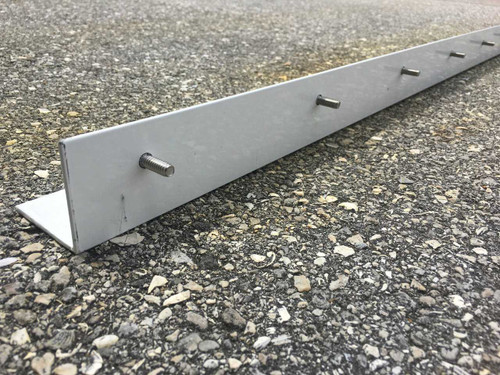The reverse studded angle is a crucial component in hurricane protection systems, designed to provide unmatched stability and security for storm panels. Whether you are a contractor, homeowner, or DIY enthusiast, understanding this product’s functionality, design, and benefits can help you make informed decisions about hurricane preparedness.
What is a Reverse Studded Angle?
A reverse studded angle is an aluminum track system used to secure storm panels in place, ensuring homes and buildings remain protected during severe weather conditions. The term “reverse” refers to the specific orientation of the studs, which are positioned to optimize the attachment of panels. These tracks typically feature studs spaced every 6 inches, making them compatible with most standard storm panels.
Components and Materials
Aluminum Construction
Reverse studded angles are made of high-grade aluminum, chosen for its lightweight, corrosion-resistant properties. This ensures durability even in coastal areas prone to saltwater exposure.
Stud Specifications
The studs are integral to the system, designed to hold storm panels securely. Common specifications include:
- Material: Stainless steel or aluminum for rust resistance.
- Spacing: 6 inches apart for optimal support.
- Size: Studs are engineered to fit standard storm panel dimensions.
Design and Dimensions
Standard Dimensions
Reverse studded angles are typically manufactured in standard dimensions, such as 2 inches by 2 inches with a thickness of 0.093 inches. These dimensions ensure compatibility with various panel types and installation scenarios.
Finishes and Customization
Most reverse studded angles come in white or bronze finishes, allowing them to blend seamlessly with building exteriors. Custom lengths are often available, enabling precise fits for unique project requirements. However, custom cuts may incur additional fees.
Functionality and Application
Reverse studded angles play a vital role in hurricane protection by securely holding storm panels in place. They are compatible with BERTHA™ storm panels, including 2-inch and 2.25-inch models. These tracks can be installed on various surfaces, such as floors, window sills, or headers, making them versatile for residential and commercial applications.
Installation Guidelines
Step-by-Step Installation
- Preparation: Measure the installation area and cut the reverse studded angle to the required length.
- Positioning: Align the track on the desired surface, ensuring it is level.
- Drilling Holes: Pre-drill holes into the track and the mounting surface.
- Attachment: Secure the track using screws or anchors, depending on the surface material.
- Panel Installation: Slide the storm panels into the track, ensuring the studs hold them firmly.
Tools and Hardware Required
- Drill
- Screws or anchors
- Measuring tape
- Level
Advantages of Reverse Studded Angle
Enhanced Stability
The studded design ensures panels remain secure, even during high winds.
Ease of Installation
Pre-drilled holes and lightweight materials make the installation process straightforward.
Durability
Aluminum construction resists rust and corrosion, ensuring long-term reliability.
Comparison with Other Track Systems
Reverse studded angles stand out when compared to other track systems. For instance, studless tracks, such as the reverse “F” track, lack the built-in studs, requiring additional hardware to secure panels. While studless systems may offer a sleeker appearance, studded angles provide superior stability and ease of use.
| Feature | Reverse Studded Angle | Studless Track |
|---|---|---|
| Built-in Studs | Yes | No |
| Installation Ease | High | Moderate |
| Stability | Superior | Moderate |
| Customization Options | Available | Limited |
Purchasing Considerations
When purchasing reverse studded angles, consider the following:
- Material Quality: Ensure the track is made from high-grade aluminum.
- Compatibility: Verify compatibility with your storm panels.
- Supplier Reputation: Purchase from reputable suppliers to guarantee quality.
- Additional Costs: Factor in overlength fees for custom cuts.
Maintenance and Care
To ensure your reverse studded angle remains effective:
- Inspect Regularly: Check for signs of wear, such as corrosion or loose studs.
- Clean Periodically: Remove dirt and debris to prevent buildup.
- Tighten Hardware: Ensure screws and anchors remain secure.
Conclusion
The reverse studded angle is an essential component for hurricane protection, offering durability, ease of installation, and unmatched stability. By understanding its design, application, and maintenance, you can ensure your property is well-protected against severe weather. Whether you’re upgrading your current system or installing a new one, the reverse studded angle is a reliable choice for safeguarding your home or business.
Related Articles
Everything You Need to Know About 1/35 Scale WWII US Army Figures
China Collection Sazabi – The Ultimate Guide to This Exclusive MG Model
Yonex Badminton Shoes Eclipsion Z3: Ultimate Guide to Performance and Comfort
Matthew Benner Processing Point: Revolutionizing Data and Workflow Management




